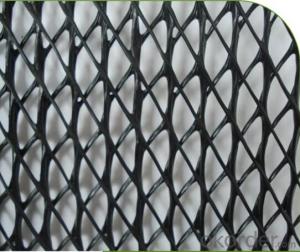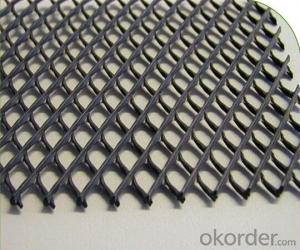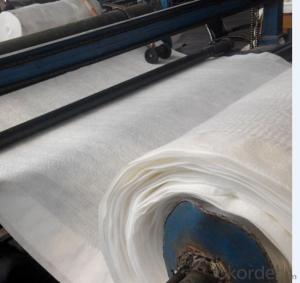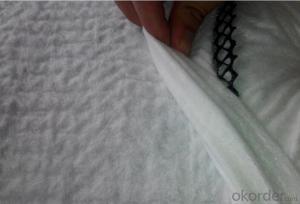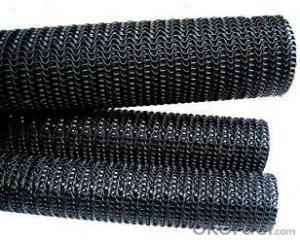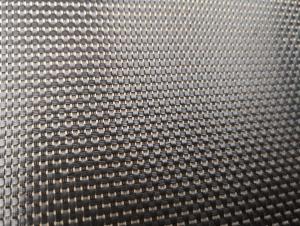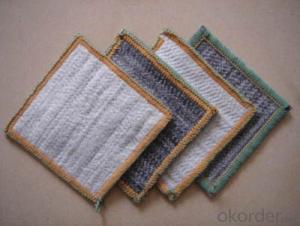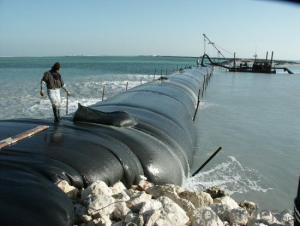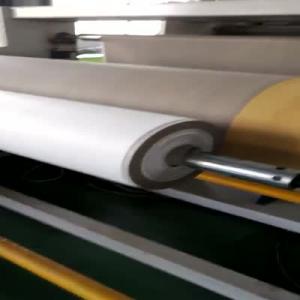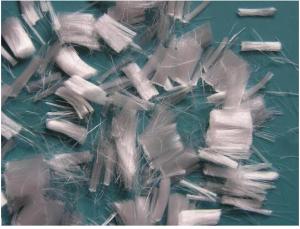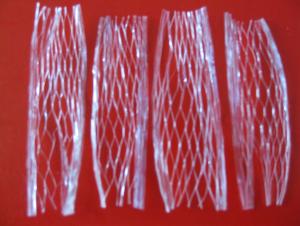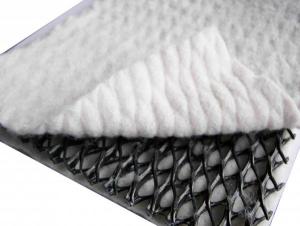Tri Dimensional Composite Drinage Geonet from 750g/m2 to 1600g/m2
- Loading Port:
- Qingdao
- Payment Terms:
- TT or LC
- Min Order Qty:
- 2000 m²
- Supply Capability:
- 200000 m²/month
OKorder Service Pledge
OKorder Financial Service
You Might Also Like
Tri Dimensional Composite Drinage Geonet Introduction:
Geonet-geotextile Drainage Geocomposites are engineered to replace costly, conventional open graded aggregate and/or perforated- pipe subsurface drainage systems. The Geonet-geotextile Drainage Geocomposite is created by laminating a filtration geotextile on one or both sides of a Geonet. Geocomposite Drainages have reached acceptance as state-of-the-practice because they provide sufficient in-place drainage and offer reduced material cost, installation time and design complexity over conventional systems.
Tri Dimensional Composite Drinage Geonet Specifications and technical parameters:
Item | Unit | |||||||
1200g | 1400g | 1600g | 1800g | 2000g | ||||
1 | Compound Weight of Unit Area | g/m2 | ≥1200 | ≥1400 | ≥1600 | ≥1800 | ≥2000 | |
2 | Compound Thickness | mm | ≥6.0 | ≥7.0 | ≥8.0 | ≥9.0 | ≥10.0 | |
3 | Compound Tensile Strength | KN/m | ≥16.0 | ≥16.0 | ≥16.0 | ≥16.0 | ≥16.0 | |
4 | Compound Hydraulic Conductivity | m2/s | ≥1.2×10-4 | ≥1.2×10-4 | ≥1.2×10-4 | ≥1.2×10-4 | ≥1.2×10-4 | |
5 | Net and Non-woven Geotextile Peel Strength | KN/m | ≥0.3 | ≥0.3 | ≥0.3 | ≥0.3 | ≥0.3 | |
6 | Net Thickness | mm | ≥5.0 | ≥5.0 | ≥6.0 | ≥7.0 | ≥8.0 | |
7 | Net Tensile Strength | KN/m | ≥13.0 | ≥15.0 | ≥15.0 | ≥15.0 | ≥15.0 | |
8 | Non-woven Geotextile Weight of Unit Area | g/m2 | ≥200 | ≥200 | ≥200 | ≥200 | ≥200 | |
9 | Non-woven Geotextile Permeability | cm/s | ≥0.3 | ≥0.3 | ≥0.3 | ≥0.3 | ≥0.3 | |
10 | Width | m | 2.1 | 2.1 | 2.1 | 2.1 | 2.1 | |
11 | Roll Length | m | 30 | 30 | 30 | 30 | 30 | |
Tri Dimensional Composite Drinage Geonet Application:
1) Landfill drainage;
2) roadbed and road drainage;
3) railway drainage;
4) tunnel drainage,
5) underground structure drainage,
6) the retaining back wall drainage;
7) gardens and sports ground drainage
Tri Dimensional Composite Drinage Geonet Features:
1)Excellent drainage function, can bear long time hige press load
2)High tensile and shear strength
3Reduce the rate geotextile embedding into the core of geonet, can protect long time stable water conductivity
4)Tri-dimension composite geonet for drainage can bear more than 2000kpa compression load
5)Its anti-compression capacity is much larger than common geonet for drainage
6) Certificate :ISO14001:2004, ISO9001:2008
FAQ
1. Which payment do you accept?
For you convinience,our payment can be L/C,TT
2. Is free sample available?
We can supply free samples if you need.
3. How about your quality?
We have strict quality control system, we make testing on incoming raw material and finished products. Your third party testing is also welcomed. With high quality, our products are used on government projects at home and abroad. Our product quality is accepted by clients from all over the world.
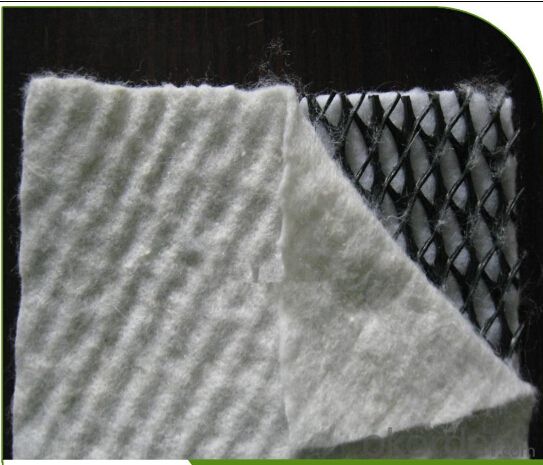
- Q:Can earthwork products be used for constructing raised beds in gardens?
- Yes, earthwork products such as soil, compost, and mulch can be used for constructing raised beds in gardens. These materials can be used to create the foundation and fill for the raised beds, providing a fertile environment for plants to grow. Additionally, earthwork products can help improve drainage, retain moisture, and enhance the overall health and productivity of the garden beds.
- Q:Can earthwork products be used for creating outdoor dining areas?
- Yes, earthwork products can be used for creating outdoor dining areas. Earthwork products such as gravel, pavers, and natural stone can be used to create a solid and functional foundation for outdoor dining spaces. These materials are durable, weather-resistant, and can be arranged in various designs to create an aesthetically pleasing outdoor dining area. Additionally, earthwork products can also be used to build retaining walls, seating areas, and decorative features that enhance the overall ambiance of the outdoor dining space.
- Q:How are geotextile tubes used in sediment control during harbor dredging?
- Geotextile tubes are commonly used in sediment control during harbor dredging as they provide an effective method for containing and dewatering the dredged material. These large permeable fabric tubes are filled with sediment and then placed strategically along the shoreline or within the harbor area. They act as temporary barriers, preventing the spread of sediment and allowing water to drain out through the geotextile fabric. This process helps to separate the sediment from the water, allowing for easier disposal and minimizing environmental impacts.
- Q:Can earthwork products be used for embankment stabilization?
- Yes, earthwork products can be used for embankment stabilization. Earthwork products such as geosynthetics, geotextiles, and geogrids are commonly employed in embankment stabilization projects. These materials help to reinforce the soil, prevent erosion, and provide stability to the embankment.
- Q:How do earthwork products contribute to groundwater recharge?
- Earthwork products, such as rain gardens, bioswales, and retention ponds, contribute to groundwater recharge by capturing and filtering stormwater runoff. These products are designed to slow down and absorb rainwater, allowing it to infiltrate into the ground instead of running off into nearby water bodies. This process helps replenish underground aquifers and maintain water levels, ultimately supporting groundwater recharge.
- Q:What are the key considerations when using geotextile mats for erosion control on golf courses?
- The key considerations when using geotextile mats for erosion control on golf courses include the material's durability and strength, its ability to effectively filter water and sediment, proper installation techniques, and ensuring that it is compatible with the specific soil and vegetation conditions of the golf course. Additionally, maintenance and inspection of the mats should be regularly conducted to evaluate their effectiveness and address any potential issues.
- Q:Can earthwork products be used for retaining wall construction?
- Yes, earthwork products can be used for retaining wall construction. Earthwork products such as geotextiles, geogrids, and geomembranes are commonly used in retaining wall construction to provide additional strength, stability, and erosion control. These products help to reinforce the soil and prevent it from shifting, which is essential for the stability and durability of retaining walls.
- Q:Non-architectural professional, how can apply for a construction division?
- Please carefully study the conditions of a construction division registration, I think you should pay attention to this "to obtain engineering or engineering economics college degree, work for 6 years, which engaged in construction project construction management work for 4 years." Said that you do not need a degree card, you go to a project or engineering economics class college diploma on the line. Engineering economics include civil engineering, architecture, electronic information technology and technology, electronic science and technology, computer science and technology, mining engineering, mineral processing engineering, surveying technology and engineering, surveying and mapping engineering, traffic engineering, port waterways and coast Engineering, shipbuilding and marine engineering, water conservancy and hydropower engineering, hydrology and water resources engineering, thermal and sports engineering, metallurgical engineering, environmental engineering, safety engineering, metal materials engineering, inorganic nonmetallic materials engineering, material forming and control engineering, petroleum engineering, Oil and gas transportation and transportation engineering, chemical engineering and technology, bioengineering, pharmaceutical engineering, water supply and drainage engineering, building environment and equipment engineering, communication engineering, electronic information engineering, mechanical design and manufacturing and automation, measurement and control technology and equipment, process equipment and control engineering , Electrical engineering and its automation, engineering management, industrial engineering and other 36 professional. These professional you just pick a school to find a college newspaper to get a diploma on the
- Q:Can earthwork products be used in underground storage applications?
- Yes, earthwork products can be used in underground storage applications. These products, such as geotextiles and geosynthetics, are commonly used to reinforce and stabilize the ground in underground storage facilities, providing additional strength and durability to the structure. They help prevent soil erosion, improve drainage, and enhance the overall performance and lifespan of the underground storage system.
- Q:What are the civil engineering materials?
- Non-mechanical hard cementing materials: lime, gypsum, water glass, magnesia cementitious materials
1. Manufacturer Overview |
|
|---|---|
| Location | |
| Year Established | |
| Annual Output Value | |
| Main Markets | |
| Company Certifications | |
2. Manufacturer Certificates |
|
|---|---|
| a) Certification Name | |
| Range | |
| Reference | |
| Validity Period | |
3. Manufacturer Capability |
|
|---|---|
| a)Trade Capacity | |
| Nearest Port | |
| Export Percentage | |
| No.of Employees in Trade Department | |
| Language Spoken: | |
| b)Factory Information | |
| Factory Size: | |
| No. of Production Lines | |
| Contract Manufacturing | |
| Product Price Range | |
Send your message to us
Tri Dimensional Composite Drinage Geonet from 750g/m2 to 1600g/m2
- Loading Port:
- Qingdao
- Payment Terms:
- TT or LC
- Min Order Qty:
- 2000 m²
- Supply Capability:
- 200000 m²/month
OKorder Service Pledge
OKorder Financial Service
Similar products
New products
Hot products
Hot Searches
Related keywords
